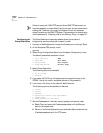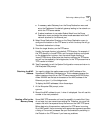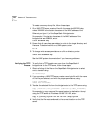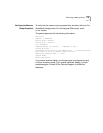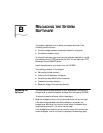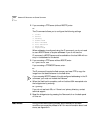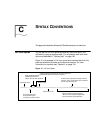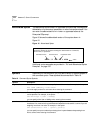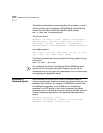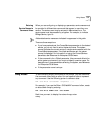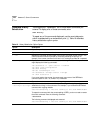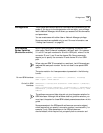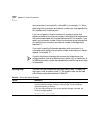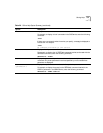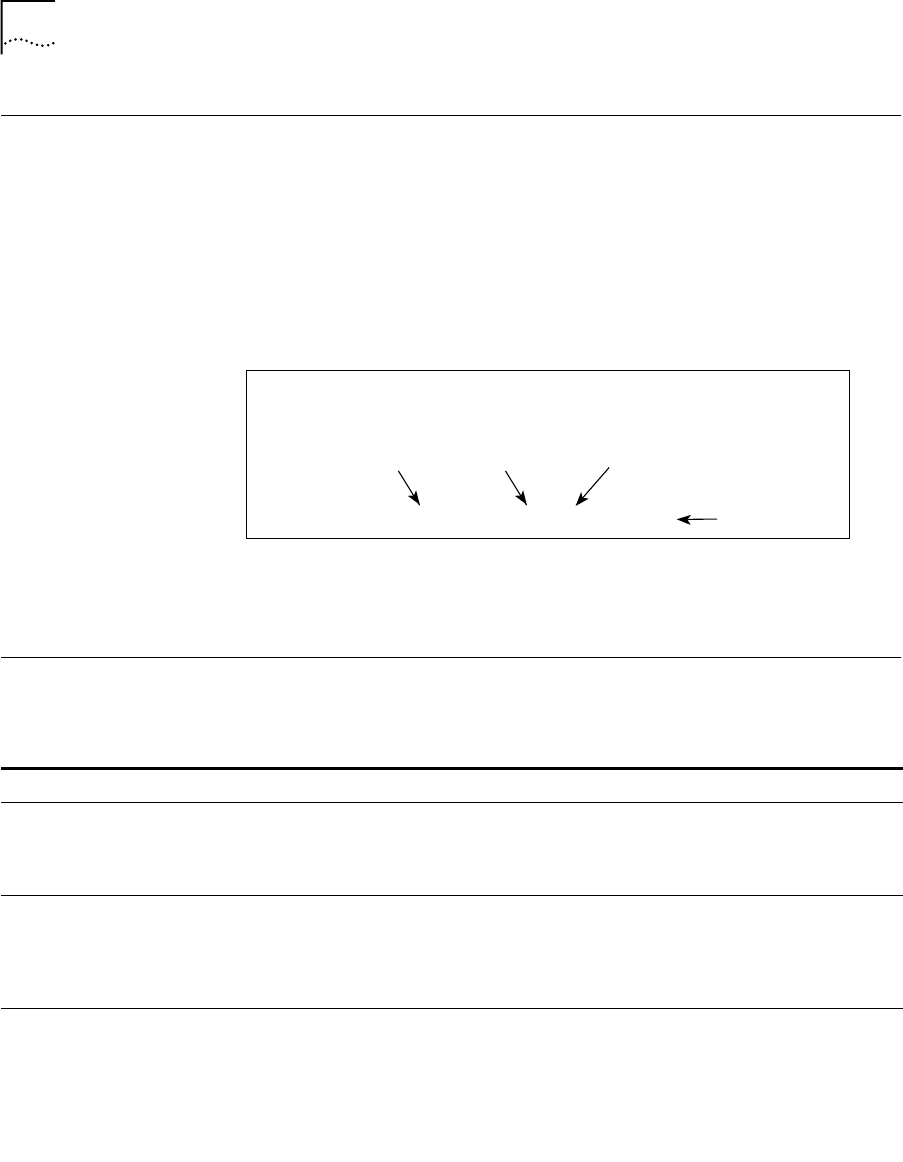
154 APPENDIX C: SYNTAX CONVENTIONS
Abbreviated Syntax The abbreviated syntax shown in uppercase is the shortest unambiguous
abbreviation of a command, parameter, or value that can be entered. You
can enter the abbreviated form in lower- or uppercase letters at the
Enterprise OS prompt.
Figure 16 shows the abbreviated version of the syntax shown in
Figure 15.
Figure 16 Abbreviated Syntax
Additional syntax examples are provided in “Full and Abbreviated Syntax
Examples” on page 155.
Symbols Depending on the command, you may see a variety of symbols as part of
the command syntax. These symbols are summarized in Table 18.
SETD !1 -BR TB = NTB
Command name Service name
Commands, parameters, and service names can be entered in abbreviated form.
Uppercase denotes the shortest unambiguous abbreviation of a command,
service name, or parameter.
Parameter name
Value
Table 18 Command Syntax Symbols
Symbol Description
angle brackets < > Enclose a variable or value. You must specify the variable or value; for example, in the syntax:
ADD -SNMP COMmunity <“com.name”>
you must supply a name for com.name when entering the command.
square brackets [ ] Enclose an optional value or a list of optional arguments. One or more values or arguments
can be specified. For example, in the syntax:
SET PRIvilege = [User | NetMgr]
you can specify either User or NetMgr when entering the command.
parentheses ( ) Enclose a list of values that can be assigned to a single parameter. At least one of them must
be selected. You must enter the parentheses and separate the values with a comma if you are
assigning more than one value. For example, in the syntax:
SET CurrentPorts = ALL | (<port>[,<port>])
you can specify two port numbers by enclosing them in parentheses and separating them
with a comma when entering the command.



